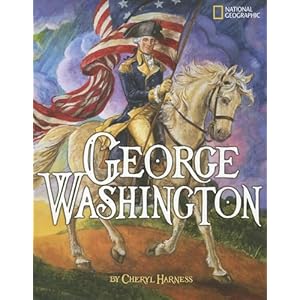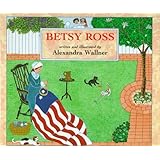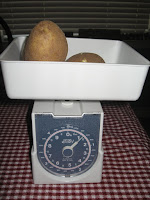There is a little bit of the American Revolution going around. I have several friends working their way through it, others asking about it, and we are in the middle of it, so why not post one blog and help everyone on their journey through the American Revolution?
Rather than learn about the Revolution as a whole this year, we're taking a look at the events from the angles of the men and women who lived it. As a way to tie it together, we are putting all the famous faces on a timeline so the kids can visually see where the people fall in line time-wise.
Our timeline. You can see we've just started. In fact, we have two more pictures to add today: Abigail Adams and Martha Washington. A side note- our study and reading about George and Martha Washington made the kids curious about Abraham Lincoln. One of our daughters had read Meet George Washington (Step Up Books series) independently and then borrowed Meet Abraham Lincoln (Step Up Books series) from friends, so when the topic came up, the girls started sharing all they knew about our sixteenth president. Later we read about Annie Oakley somewhere, and well, our history study moved forward to the Civil War. Not sure I was done with all I wanted to study about the Revolution, but intrinsic motivation increases retention, so I decided I would rather move on and have them remember what we are studying. Later this week we will add some Civil War era folks to the time line.
Back to the Revolution. Here are some of the books we enjoyed as we studied those who fought for the independence of our country.
George Washington
Adler, David A., A Picture Book of George Washington
d'Aulaire, Ingri, George Washington
Harness, Cheryl, George Washington
Heilbroner, Joan, Meet George Washington (StepUp Books series reprinted in paperback with similar text as a Landmark book)
Stevenson, Augusta, George Washington: Young Leader (Childhood of Famous Americans)
Abraham Lincoln
Adler, David A., A Picture Book of Abraham Lincoln
Brenner, Martha, Abe Lincoln's Hat (Step Into Reading series)
Winters, Kay, Abe Lincoln: The Boy Who Loved Bo
oks
Betsy Ross
Wallner, Alexandra, Betsy Ross
Weil, Ann, Betsy Ross: Designer of our Flag (Childhood of Famous Americans)
Paul Revere
Adler, David A., A Picture Book of Paul Revere
Fritz, Jean, And Then What Happened, Paul Revere?
Stevenson, Augusta, Paul Revere: Boston Patriot (Childhood of Famous Americans)
Benjamin Franklin
Hareness, Cheryl, The Remarkable Benjamin Franklin
Stevenson, Augusta, Benjamin Franklin: Young Printer (Childhood of Famous Americans)
Sam Adams
Adler, David A., The Picture Book of Sam Adams
Fritz, Jean, Why Don't You Get a Horse, Sam Adams?
The American Revolution
Dalgliesh, Alice, The 4th of July
McGovern, Ann, If You Lived In Colonial Times
Moore, Kay, If You Lived At the Time of the American Revolution
As we move onto the Civil War here is a lapbook one of my daughters created. Some of her graphics were cut from old history textbooks. Templates for some of the topics were used from
Homeschool Share.



























 nt a garden.
nt a garden.